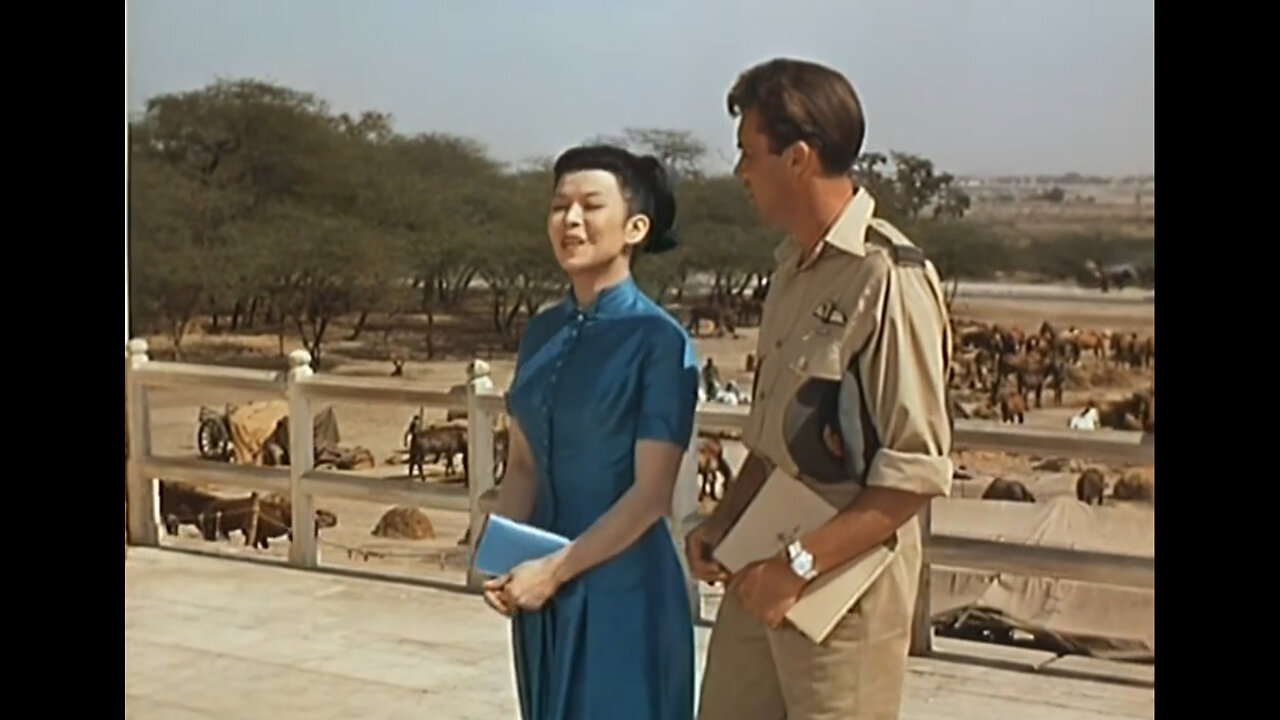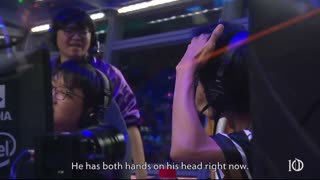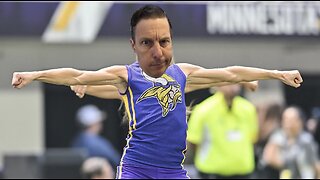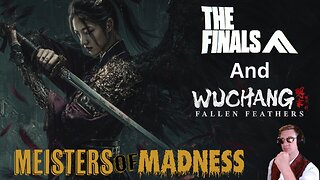Premium Only Content

The Wind Cannot Read (1958 - Public Domain)
David Lean co-wrote the film script with the author of the novel 'The Wind Cannot Read, Richard Mason. It is not a great script and David Lean considered it a draft that needed a lot of work (hence his eventual disengagement from the movie project).
I have tried to make this movie presentable but - apparently the celluloid is lost, and the official DVD (I have) is a cobbled-together bunch of TV tape recordings that are savagely cropped, and have different aspect ratios (random black bars appearing), and different resolutions from low to blurry Lego, and different colour pallets. I have done the best I can and produced a rough but consistent 720p-ish video that is watchable in a 24 inch diagonal window (or lower). I cleaned the audio a little and gave it a small stereo spread to make it sound less 'dead'. For some reason Rumble reduces the resolution on most of my uploads to VHS tape quality ?
Richard Mason's novel 'The Wind Cannot Read' is the story of a romance between a British officer and a Japanese girl in India during World World Two. David Lean completed a script and cast Kishi Keiko as the girl, but disagreed with Alexander Korda, and the project fell through. Lean had already entered into discussions with Sam Spiegel, regarding a film version of Pierre Boule's novel The Bridge on the River Kwai. After Korda's death in 1956 the rights to Mason's novel were sold to Rank Film Productions, who successfully realised the film in 1958, using the script Lean had written with Mason. Betty Box produced and Ralph Thomas directed this version, which stars Dirk Bogarde and Yoko Tani.
The Wind Cannot Read is a 1958 British drama film directed by Ralph Thomas and starring Dirk Bogarde, Yoko Tani, Ronald Lewis and John Fraser. It was based on the 1946 novel by Richard Mason, who also wrote the screenplay with David Lean.
Songwriter Peter Hart received the 1958 Ivor Novello award for Best Song Musically and Lyrically for the title song, performed by Vera Lynn.
The title derives from a Japanese poem, and lines from the poem are prominently displayed (in English) in the movie. The same lines are on the tombstone of novelist/screenwriter Mason, who died in 1997.
Plot : The film takes place in Burma and India during World War II. A British officer falls in love with his Japanese instructor at a military language school. They start a romance, but she is regarded as the enemy and is not accepted by his countrymen. They marry in secret and plan on spending his two weeks' leave together. When one of the other officers is injured, he is sent into the field as an interrogator. Later he is captured by the Japanese army when he is patrolling with a brigadier and an Indian driver in a Japanese-controlled zone. He escapes and returns to his own lines, only to discover that his wife is suffering from a brain tumour. Although the doctor initially gives her good odds of surviving, she dies after an operation.
Cast:
Dirk Bogarde as Flight Lieutenant Michael Quinn
Yoko Tani as Aiko Suzuki ('Sabbi')
Ronald Lewis as Fenwick
John Fraser as Peter Munroe
Anthony Bushell as Brigadier
Heihachirō Ōkawa as Lieutenant Nakamura (Japanese: 陸軍中尉中村, Rikugun-Chūi Nakamura)
Marne Maitland as Bahadur
Michael Medwin as Officer Lamb
Richard Leech as Hobson
Tony Wager as Moss
Tadashi Ikeda as Itsumi-san
Yôichi Matsue as Corporal Mori (Japanese: 毛利伍長, Mōri Gochō)
Donald Pleasence as Doctor
Joy Michael as First nurse
Avice Landone as Second nurse
Jasdev Singh Soin as Indian soldier
Production : In 1955 David Lean agreed to film Richard Mason's novel The Wind Cannot Read, the story of a romance between a British officer and a self-exiled Japanese woman in India circa 1943, during World War II.
Originally Lean considered making the lead character a Canadian and offered the part to Glenn Ford. Lean also offered the role to Kenneth More, who was unsure about whether the public would accept him in the part and turned it down. It was a decision More later regarded as "the greatest mistake I ever made professionally". Lean had completed a script in collaboration with Mason and cast Keiko Kishi as the girl, but disagreed with Alexander Korda, who was to have produced the film and the project fell through.
Lean had already entered into discussions with Sam Spiegel, regarding a film version of Pierre Boulle's novel The Bridge on the River Kwai. After Korda's death in 1956, the rights to Mason's novel were sold to Rank Film Productions, who assigned the project to the team of Betty Box and Ralph Thomas.
Filming took place on location in India in early 1958, with Dirk Bogarde in the main role.
Ralph Thomas later said he thought Sir John Davis of Rank "very bravely" authorised location-filming in India "because he trusted David Lean's judgement that it was a splendid book. It was a real three-handkerchief picture, which I thoroughly enjoyed making, and Dirk was very good in it."
Reception : The film was one of the most popular at the British box office in 1958. Kinematograph Weekly listed it as being "in the money" at the British box office in 1958.
Miscellaneous : During World War II, the beauty Aiko Clarke, was one of the several Japanese who taught at the University of London's School of Oriental and African Studies (SOAS). She was immortalized by one of her students, Richard Mason, the author of The World of Suzie Wong, in his first novel The Wind Cannot Read.
The Japanese instructors had to be accompanied by SOAS students for their protection, on outings in London. The instructors also taught respect for Japanese culture and life. Otome Daniels's parting words to pupils leaving for India were 'please look kindly on my people'.
Mason served in the Far East in the Royal Air Force as an interrogator of Japanese prisoners-of-war. He did his writing in the evenings, often in temperatures of over 100 degrees and carried the manuscript in his jeep during the Burma Campaign.
-
 LIVE
LIVE
Esports Awards
2 hours agoEsports Awards: Decade Awards 2025
7,455 watching -
 9:39
9:39
MattMorseTV
2 hours ago $0.01 earnedVance just DROPPED a BOMBSHELL.
77912 -
 1:47:49
1:47:49
Jeff Ahern
2 hours ago $0.13 earnedThe Sunday Show!
78.9K2 -
 LIVE
LIVE
Spartan
1 hour agoExpedition 33, Halo Later on (Maybe)
126 watching -
 LIVE
LIVE
Meisters of Madness
20 minutes agoFinals and Wuchang!
114 watching -
 LIVE
LIVE
Lofi Girl
2 years agoSynthwave Radio 🌌 - beats to chill/game to
402 watching -
 LIVE
LIVE
BBQPenguin_
1 hour agoTasking & PVP
7 watching -
 LIVE
LIVE
FrizzleMcDizzle
3 hours agoGladius, Creature of the Night - NEW NIGHTLORD - NightReign
16 watching -
 8:31
8:31
MattMorseTV
1 day ago $1.48 earnedTexas just did the IMPOSSIBLE.
64.1K85 -

Rotella Games
19 hours agoGreen Hell Day 6 | We Have a LONG Way to Go
12.8K4